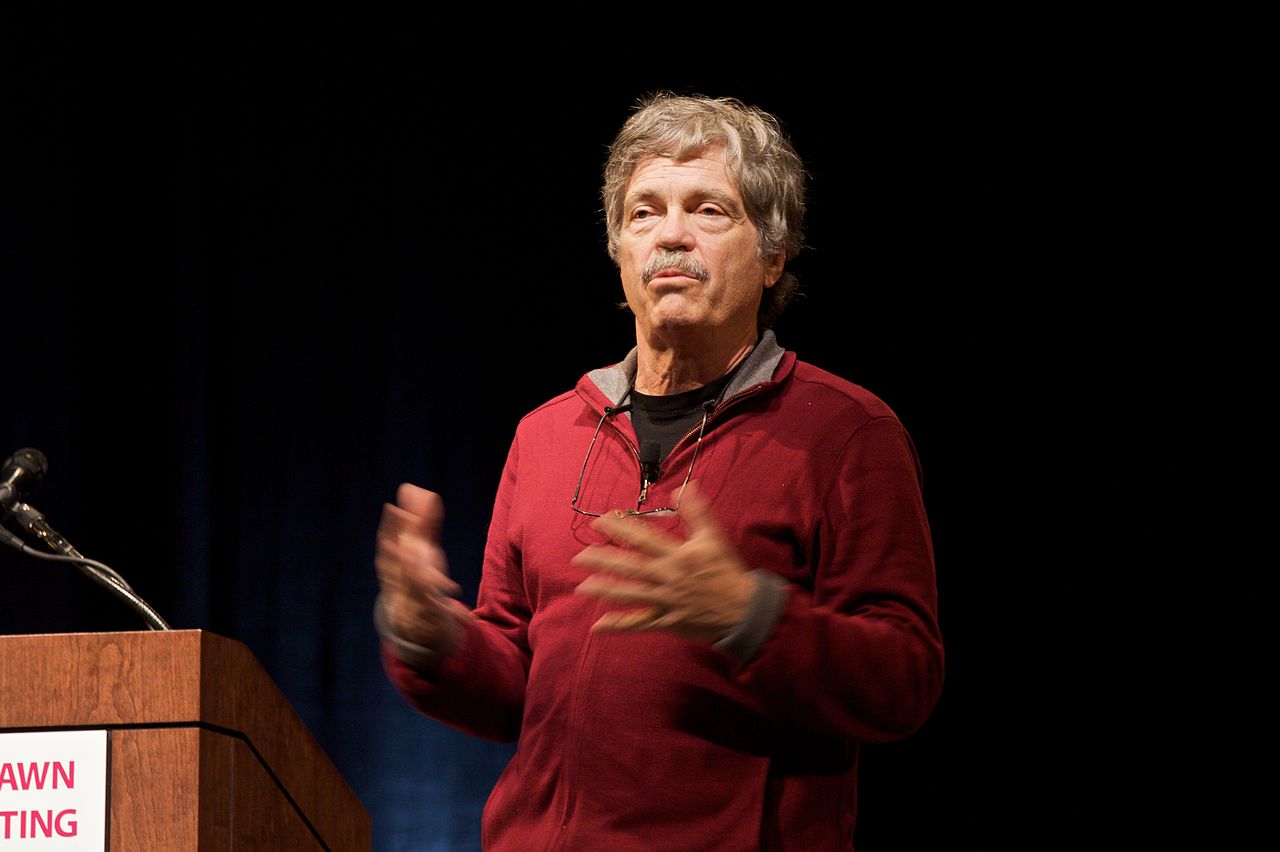Alan brought a revolution in the field of computers. He was one of the first scientists to recognize that a computer has the capability to represent objects as pictures. He is well-known as the Father of Personal Computers.
Alan Kay was a Computer Scientist from America. He was a Fellow of the National Academy of Engineering, the American Academy of Arts and Sciences, and the Royal Society of Arts. He is popularly known for his outstanding work on object-oriented programming and windowing graphical user-interface design. Alan worked for Xerox PARC and invented the concept of the laptop computer which he named Dynabook. Also, he is famous as the first researcher of mobile learning.

Birth and Childhood
He was Born on May 17, 1940, in Springfield, Massachusetts, USA. His father Hector W.Kay designed arm and leg prostheses and his mother Katherine Kay was a musician. Alan was brought up in an environment of arts and science. His childhood was such a blessed one. He read 150 books till he reached the first grade. He used to read very fluently.
Education
Alan completed his schooling at Brooklyn Technical School in New York. He graduated in Mathematics and Biology from Bethany College in West Virginia in 1966, a master’s in 1968 in Electrical Engineering, Doctor of Philosophy in CS in 1969. His thesis explained the invention of FLEX, a computer language.
Music Love
Alan Kay is a former professional jazz guitarist, composer, and theatrical designer. He taught guitar in Denver, Colorado for one year. He is also a novice of pipe organist. His musical career ended after becoming busy with his research work.
Married Life
Alan Kay married Bonnie MacBird in 1983. She is a writer, actress, playwright, and producer of screen and stage. They have four children.
Career
- In 1968, Alan learned Logo, a programming language, and worked on its enhancement and modification for educational purposes.
- In 1969, he joined Stanford Artificial Intelligence Laboratory as a visiting researcher.
- In 1970, he joined Xerox PARC and worked on the development of Smalltalk with the research staff. He formulated the idea of laptops, tablets, and e-books.
- From the year 1981 to 1984, at Atari Corporation, a Console game company, Kay was the Chief Scientist.
- In 1984, he joined Apple and due to his extraordinary contribution, he became an Apple Fellow, but that group was closed in 1997.
- In 1997, his friend recruited him as the head of research and development at Walt Disney Imagineering and became a Disney Fellow.
- Alan joined Ferren, his friend, who started Applied Minds Incorporation with Danny Hills. This led to the halting of the Fellows program.
- In 2001, Alan founded a non-profit organization, Viewpoints Research Institute, in California, dedicated to learning, children, and advanced software development to improve “powerful ideas education”.
- Kay and his Viewpoints group worked on various projects at Applied Minds in Glendale, California.
- At Hewlett-Packard, Alan Kay was a senior fellow till July 2005.
“The Computer Revolution has not happened yet”…….!!!!!!!!
Reinventing Programming with his lectures, Alan Kay says that the revolution of computers is very new. And all the good ideas have not been implemented universally. This was informed by his experiences with Sketchpad, Simula, Smalltalk, and his code of commercial software.
Awards and Recognitions
Awards and honors flooded in the name of Alan Kay. Some of them are as under:
- In 2001, UdK 01-Award in Berlin, Germany for pioneering the Graphical User Interface.
- In 2002, Telluride Tech Festival Award of Technology, Colorado.
- In 2003, ACM Turing Award.
- In 2004, the Kyoto prize.
- In 2012, UPE Abacus Award.
Really Alan’s contribution to the small computing system has fulfilled the dream of One Laptop One Child. It is a boon to children and modern education. He is rightly called the architect of The Modern Overlapping Windowing Graphical User Interface.
